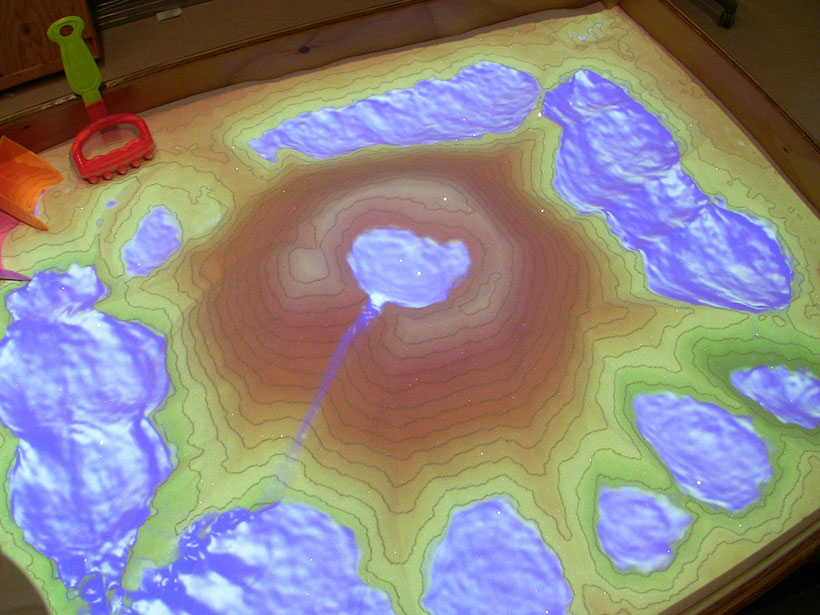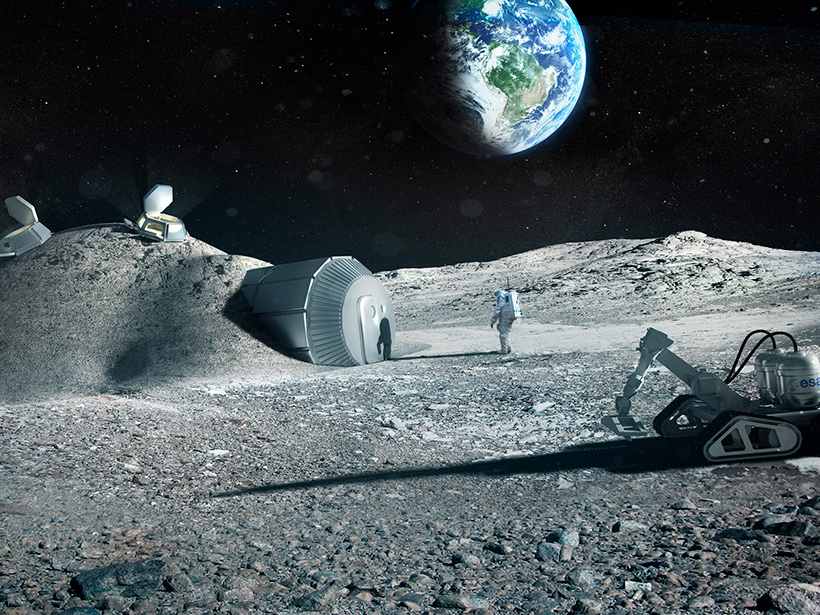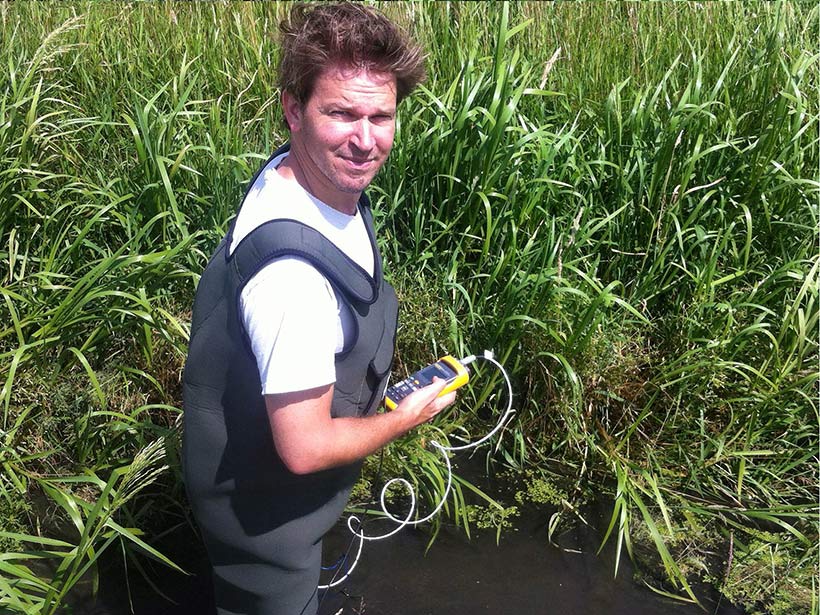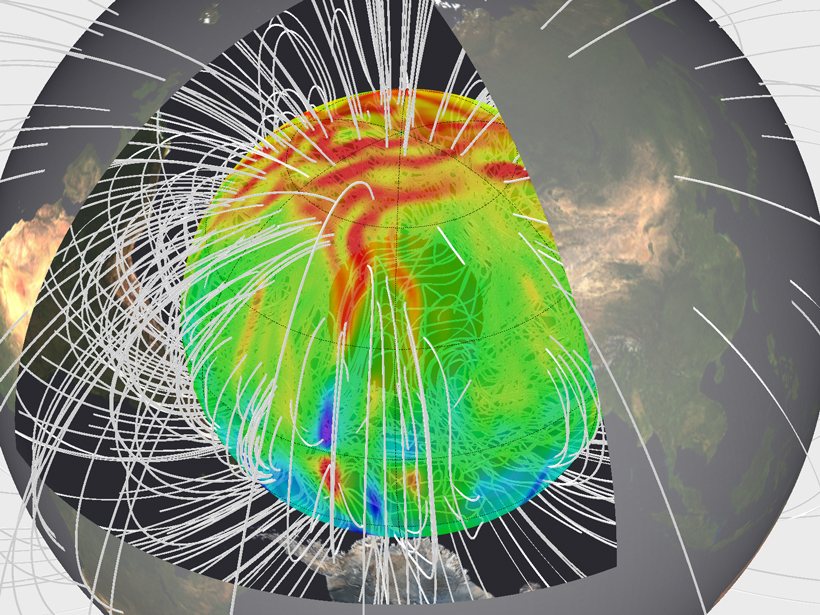Cables and circuitry inside your gadgets' screens act as accidental antennae that broadcast screens' contents. A new study says the industry needs to fix this security risk before hackers exploit it.
hardware & infrastructure
Augmented Reality Turns a Sandbox into a Geoscience Lesson
Superimposing responsive digital effects onto sand in a sandbox places educators, students, and policy makers in an augmented reality, offering a hands-on way to explore geoscience processes.
Could 3-D Printers Create Shelters for Future Lunar Settlers?
Test of a novel solar-powered printer yielded a prototype construction brick made from simulated lunar soil.
Planning for a Subduction Zone Observatory
An international, interdisciplinary effort to study and observe earthquakes, volcanoes, landslides, tsunamis, and continent building at subduction zones could advance science and protect communities.
Drifting Floats Reveal Nitrate Patterns in Mediterranean Sea
Next-generation autonomous platforms allow scientists to understand physical mechanisms that control nitrate availability in the Mediterranean surface water.
Temperature-Sensing Overalls Offer Scientific Promise
In a proof-of-concept experiment, researchers test out how well a pair of fisherman's waders can sense changes in water temperature.
Which Geodynamo Models Will Work Best on Next-Gen Computers?
A new study uses identical tests to evaluate the accuracy and performance of current models of Earth's magnetic field, then extrapolates the results to anticipated "petascale" supercomputers.
New GPS Satellite Technique to Monitor Ionospheric Disturbances
Researchers are developing better ways to use satellites to understand space weather events that can interfere with technology.
Seeing the Gravitational Waves, Despite the Seismic Waves
For detectors to sense the minute jolt of a gravitational wave announced last week, savvy geophysicists and engineers had to keep Earth's tiniest jiggles from reaching ultrasensitive instruments.
Final Mirror Segment Added to Powerful Future Space Observatory
After years of planning, testing, and assembly, the James Webb Space Telescope, the world's largest infrared, space-based observatory, is taking shape.








